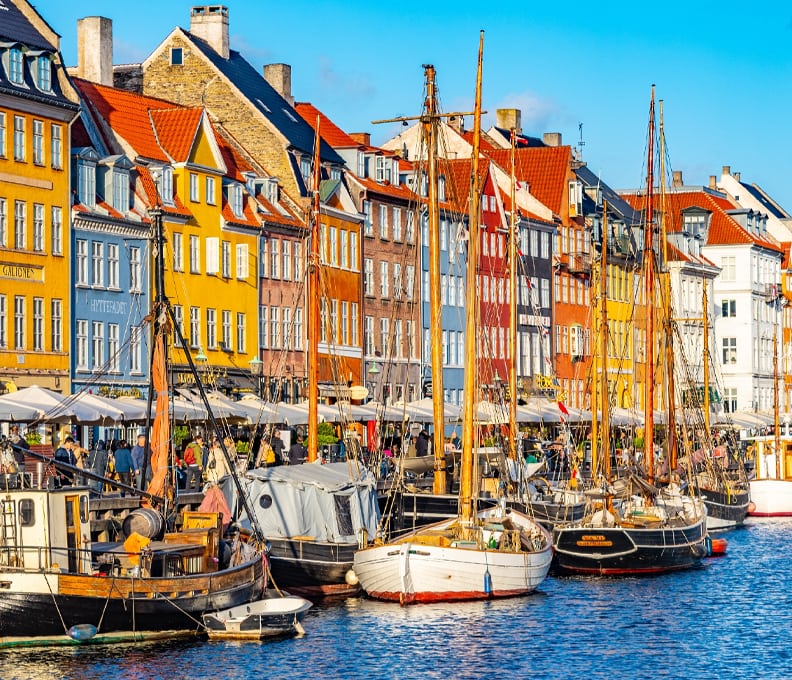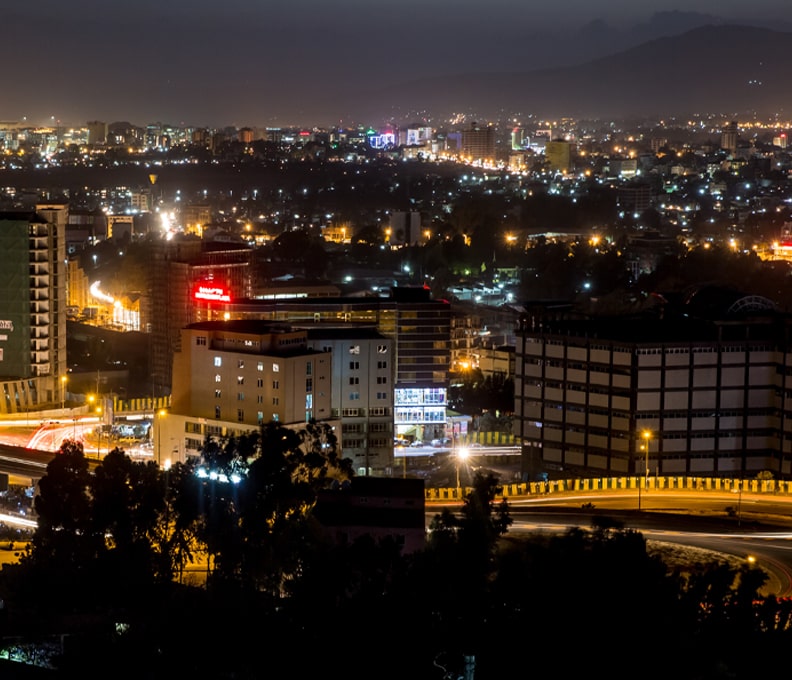Ethiopian Airlines to Launch New Atlanta, Singapore, Copenhagen Routes
Ethiopian Airlines, quickly becoming the lion carrier of Africa, is undergoing a significant international expansion with new flights to Atlanta (ATL), Copenhagen (CPH), and Singapore (SIN)
by Lark Gould
January 23, 2023

View of old Nyhavn port in the central Copenhagen, Denmark / Photo: Trabantos/Shutterstock
The new destinations Ethiopian Airlines is planning to launch should allow the Star Alliance member to better compete with Gulf rivals that are strong in connecting passengers between Asia, the Americas, and Europe.
According to Ethiopian Airlines CEO Mesfin Tasew, the airline has plans to nearly double its fleet over the next 12 years and expand its global network. As Africa’s largest airline, Ethiopian’s fleet size is expected to grow from its current count of 140 to more than 271 aircraft by 2035, operating more than 200 routes worldwide and carrying 65 million passengers annually.
Tasew recently stepped up to replace Ethiopian’s former CEO, Tewolde GebreMariam, who left the company for medical reasons last March after overseeing operations at the airline for eleven years.

Hartsfield-Jackson Atlanta International Airport / Photo: Sean Pavone Alamy Stock Photo
Flights from Atlanta (ATL) to Bole International Airport in Addis Ababa (ADD) are slated to begin May 16. The rotation will run four times weekly, with a fueling stop in Dublin, Ireland, on the outbound journey and flying non-stop on the return to Atlanta.
Ethiopian Airlines also serves the North American cities of Chicago O’Hare (ORD), Toronto Pearson (YYZ), Washington Dulles (IAD), and New York (JFK).
Service to Copenhagen from the Ethiopian capital also starts in May after a 10-year hiatus. A non-stop from Addis Ababa to Singapore relaunches in March after ceasing in 2017. The carrier will also resume its pre-pandemic service of flights to China in March, one of the few international carriers to do so since China re-opened its borders this month.
Lion Carrier of Africa
The airline hopes to compete successfully with Emirates and Qatar Airways, setting courses for rapid expansion into Africa. Through its hub in Doha, Qatar Airways, for instance, has invested in the new airport in Kigali and is looking to work more closely with RwandAir (WB, Kigali).
Other rival airlines, such as Kenya Airways and South African Airways, are also making moves to dominate this market. The two carriers, although financially troubled, hope to form a new pan-African partnership and currently work together through code-sharing and shared lounge access.
Barrier to Growth
One significant barrier to growth cited is the destination’s airport infrastructure. A bold plan for a new airport to be the largest in Africa was rolled out in 2015 but has met with continued financial, legal, and logistical challenges. The new $5 billion airport built in Bishoftu—about an hour south of Addis Ababa—would spread over some 20 miles and handle around 100 million passengers a year.
New Terminal for ADD
As a stop-gap measure to accommodate the rocket growth in air travel, current, and future, Bole International Airport opened a new Chinese-built, $360 million terminal in 2020, allowing the airport to accommodate 22 million passengers, up from its former 7 million ceiling.
Ethiopian has come up quite a bit since a tragic crash in March 2019 killed all 157 people on board and ignited a worldwide grounding of Boeing 737 MAX 8 aircraft that brought Boeing airline manufacturing operations to its knees. Flight ET 302 was flying to the Kenyan capital of Nairobi when it went down six minutes after takeoff.

The city of Addis Ababa / Photo: Dereje/Shutterstock
But lions are not a species to be hobbled for long. Ethiopia’s national symbol, the Lion of Judah, today commands the lion’s share of the Pan-African passenger and cargo traffic through its young and modern fleet to 127 international passenger and cargo destinations across five continents. That fleet includes ultra-modern and environmentally friendly aircraft such as Airbus A350, Boeing 787-8, 787-9, 777-300ER, 777-200LR, 777-200 Freighter, and Bombardier Q-400.
“We have launched Vision 2035,” said the new airline CEO said in an interview last fall, “consisting of building growth that is both rapid and sustainable, still based on the same five pillars: fleet modernization, infrastructure development, human resources development, information technology, and sustainability.”




